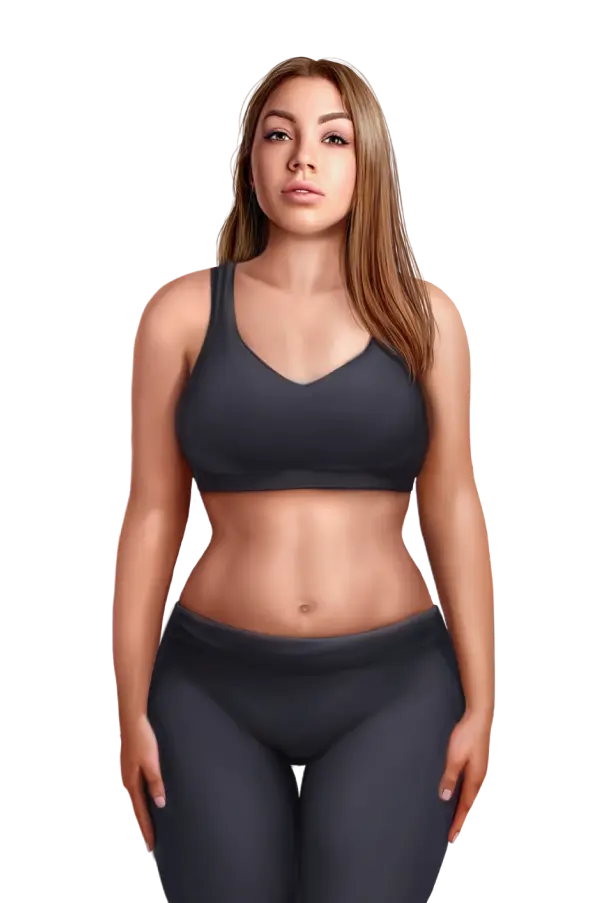Anemia is a condition where a decrease has happened in the number of red blood cells (RBCs) or hemoglobin in the blood. This results in a decreased ability of the blood to carry oxygen.
Get your personalized
meal plan!
There are many different types of anemia, each with its own cause. The most common type of anemia is iron-deficiency anemia, which can be caused by blood loss, pregnancy, or a diet low in iron.
Other types of anemia include (2):
- Aplastic anemia: This is a rare type of anemia that occurs when the bone marrow does not produce enough new blood cells.
- Sickle cell anemia: This is a type of anemia that is inherited and caused by abnormal red blood cell formation.
- Thalassemia: This is another type of anemia that is inherited and caused by inadequate hemoglobin.
- Pernicious anemia: This type of anemia is caused by a lack of vitamin B12 in the diet or an inability to absorb it. Another vitamin deficiency anemia can be caused by a lack of folate in the diet.
While diet may not be the only cause of anemia, it is often a contributing factor. Eating a diet that is low in iron or other nutrients needed for RBC production can lead to anemia. A diet lacking in vitamin B12 or folate can also cause anemia (2).
The best way to treat anemia is to correct the underlying cause. If the cause is a lack of iron in the diet, then increasing iron intake is the best way to treat anemia. Eating foods that are high in iron and taking iron supplements can help increase iron levels in the blood (2).
If the cause of anemia is a lack of vitamin B12, then taking vitamin B12 supplements or eating foods that are high in vitamin B12 can help (2). If the problem is absorption, then injections may be needed.
What Should An Anemic Person Eat?
Which diet it is depends on the type of anemia. For iron deficiency anemia, the diet should include foods that are high in iron.
The Recommended Daily Allowance (RDA) for iron is 8 milligrams (mg) for adult men or postmenopausal women and 18 mg for menstruating women (1). Pregnant women need 27 mg per day. There are two types of iron in foods: heme iron and nonheme iron.
Heme Iron
This is found in animal foods and is better absorbed than non heme iron. Good sources of heme iron include:
- Meat, particularly red meat
- Poultry
- Fish
- Liver (except for pregnant women, who should avoid liver due to high amounts of preformed vitamin A)
Nonheme Iron
This is found in both animal and plant foods. Nonheme iron is not as well absorbed as heme iron, but it is a major source of iron in the diet. Good sources of nonheme iron include:
- Beans
- Lentils
- Spinach
- Tofu
- Fortified breakfast cereals
To help increase the absorption of nonheme iron, it is important to eat foods that are high in vitamin C. Good sources of vitamin C include:
- Oranges
- Strawberries
- Tomatoes
- Peppers
For pernicious anemia, the diet should include foods that are high in vitamin B12. The RDA for vitamin B12 is 2.4 micrograms (mcg) per day (1). Good sources of vitamin B12 include:
- Meat
- Poultry
- Fish
- Shellfish
- Eggs
- Dairy products
Vitamin B12 is also found in fortified breakfast cereals and some nutritional yeast products.
Folate is found in leafy green vegetables, beans, nuts, whole grains, and fortified grain products.
In addition to following a healthy diet, there are other things that can be done to treat anemia. If you are iron deficient, your doctor may recommend taking iron supplements.
If you are B12 deficient, your doctor may recommend taking vitamin B12 supplements or getting injections of vitamin B12 if you cannot absorb it well in oral form.
Read More: 3-Day Plateau Diet: Is This Plan The Quickest Way Out Of A Weight Loss Plateau?
Daily Meal 7-Day Anemia Diet Plan
This anemia diet is rich in iron and vitamin C foods. It also includes foods that are high in vitamin B12 and folate.
Day 1
- Breakfast: Fortified breakfast cereal with milk, orange juice, and a banana
- Lunch: Tuna sandwich on whole wheat bread with lettuce and tomato, carrot sticks, and an apple
- Dinner: Grilled chicken breast, steamed broccoli, brown rice, and a slice of watermelon
Day 2
- Breakfast: Scrambled eggs, whole wheat toast with jelly, and a glass of milk
- Lunch: Chicken salad with lettuce, grapes, and whole wheat crackers
- Dinner: Beefburger on a whole wheat bun, baked sweet potato fries, and a mixed green salad
Day 3
- Breakfast: Banana smoothie made with milk and yogurt, oatmeal with raisins
- Lunch: Turkey sandwich on whole wheat bread with lettuce and avocado, carrot sticks, and a pear
- Dinner: Salmon, quinoa, steamed green beans, and a cup of berries
Day 4
- Breakfast: Pancakes made with whole wheat flour, topped with fresh fruit, and a glass of milk
- Lunch: Grilled chicken wrap with lettuce, tomato, and cucumber, yogurt, and a clementine
- Dinner: Spaghetti with beef and vegetables, garlic bread, and a side salad
Day 5
- Breakfast: Omelet with mushrooms, onions, and cheese, whole wheat toast with jelly, and a glass of orange juice
- Lunch: Tuna salad with whole wheat crackers, grapes, and an apple
- Dinner: Chicken stir-fry over brown rice, and a fortune cookie
Day 6
- Breakfast: Smoothie made with milk, yogurt, and blueberries, whole wheat toast with peanut butter
- Lunch: Grilled cheese sandwich on whole wheat bread with tomato soup, carrot sticks, and an orange
- Dinner: Pork chops, mashed potatoes, steamed corn, and a slice of wheat bread
Day 7
- Breakfast: Eggs sunny-side up, whole wheat toast with butter, and a glass of milk
- Lunch: Chicken Caesar salad, whole wheat croutons, and a peach
- Dinner: Beef stew, whole wheat rolls, and a cup of yogurt
BetterMe app is a foolproof way to go from zero to a weight loss hero in a safe and sustainable way! What are you waiting for? Start transforming your body now!
Anemia – Foods To Avoid
There are some foods that can interfere with the absorption of iron and should be limited or avoided if you have anemia. These include:
- Tea and coffee – These beverages contain tannins, which can bind to iron and prevent its absorption. If you enjoy them, have them separately from your iron-containing meals for at least 2 hours.
- Calcium – This mineral competes with iron for absorption. Don’t take calcium supplements at the same time as iron supplements or too close to an iron-rich meal.
- Alcohol – This substance can interfere with the absorption of iron and many other important nutrients. Try to limit your alcohol intake to the recommended amounts, and if you have anemia, you may want to rethink that daily glass of wine with dinner. Save it for a special occasion.
Anemia Diet Tips
There are several things you can do to make sure you’re getting the most from your anemia diet:
Cook In A Cast-Iron Skillet
Cooking in a cast-iron skillet can increase the iron content of food. This is because the iron from the skillet can leach into the food.
Soak Your Grains
Grains contain phytates, which can bind to iron and prevent its absorption. Soaking your grains overnight can help reduce the amount of phytates.
Add Vitamin C-Rich Foods
Vitamin C can help increase the absorption of iron. So, include foods like oranges, strawberries, bell peppers, and tomatoes in your diet.
Take An Iron Supplement
If you’re not getting enough iron from your diet, you may need to take an iron supplement. Be sure to consult with your doctor before taking any supplements.
Pregnant women and women of childbearing age need more iron than other groups. This is because they lose iron during menstruation and have increased needs during pregnancy. They also need iron to make hemoglobin, which carries oxygen in the blood.
The recommended daily intake of iron for menstruating women is 18 mg per day, and for pregnant women it is 27 mg per day (3).
Read More: Pre Wedding Diet: The Must-Have Pre Wedding Dieting Guide For Every Bride
The Bottom Line
If you’re looking for an anemia diet plan, there are a few things to keep in mind. First, you need to make sure you’ll get enough iron, if your anemia is due to an iron deficiency. This means including iron-rich foods in your diet and taking an iron supplement if recommended by your doctor.
You also need to include foods that help increase the absorption of iron, such as those that are high in vitamin C. Finally, you need to avoid or limit foods that can interfere with the absorption of iron.
DISCLAIMER:
This article is intended for general informational purposes only and does not serve to address individual circumstances. It is not a substitute for professional advice or help and should not be relied on for making any kind of decision-making. Any action taken as a direct or indirect result of the information in this article is entirely at your own risk and is your sole responsibility.
BetterMe, its content staff, and its medical advisors accept no responsibility for inaccuracies, errors, misstatements, inconsistencies, or omissions and specifically disclaim any liability, loss or risk, personal, professional or otherwise, which may be incurred as a consequence, directly or indirectly, of the use and/or application of any content.
You should always seek the advice of your physician or other qualified health provider with any questions you may have regarding a medical condition or your specific situation. Never disregard professional medical advice or delay seeking it because of BetterMe content. If you suspect or think you may have a medical emergency, call your doctor.
SOURCE:
- 7 Things You Need to Avoid in Anaemia! (2022, pharmeasy.in)
- Anemia (2022, mayoclinic.org)
- Iron (2022, nih.gov)














